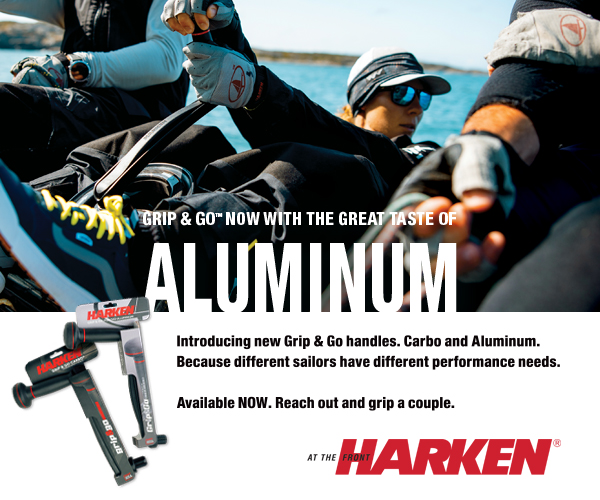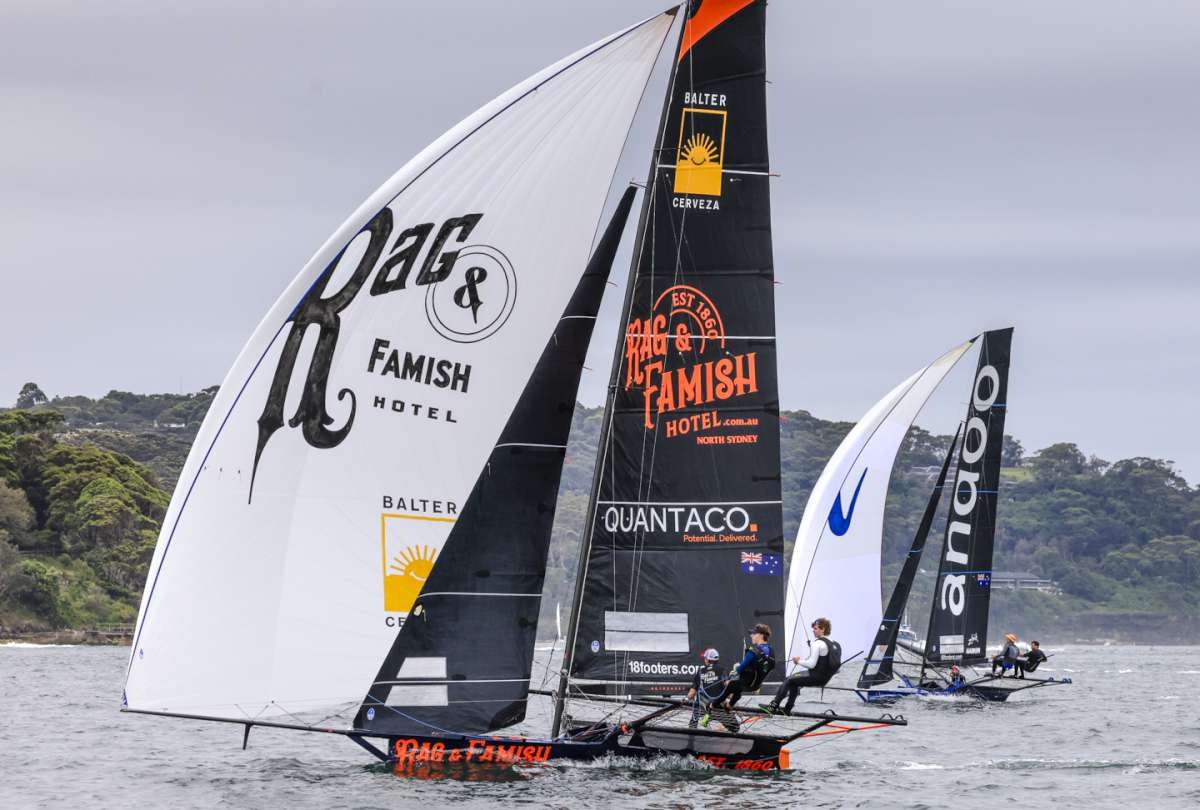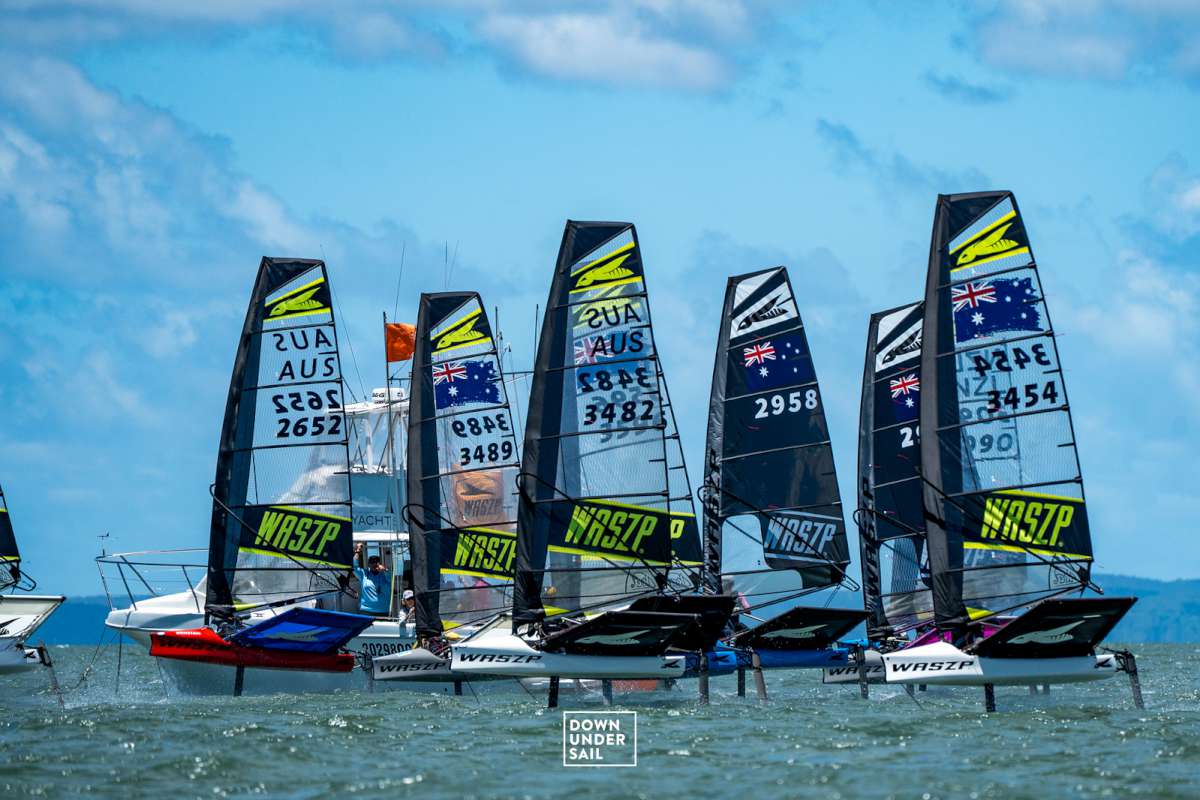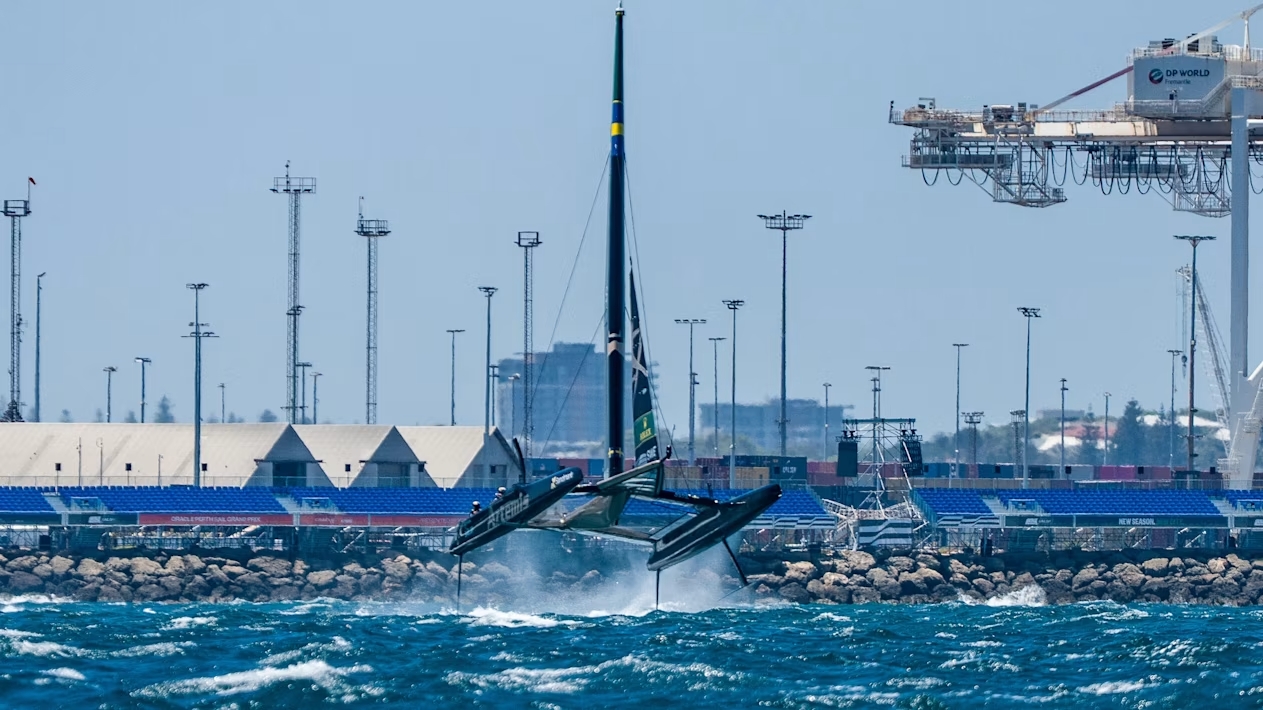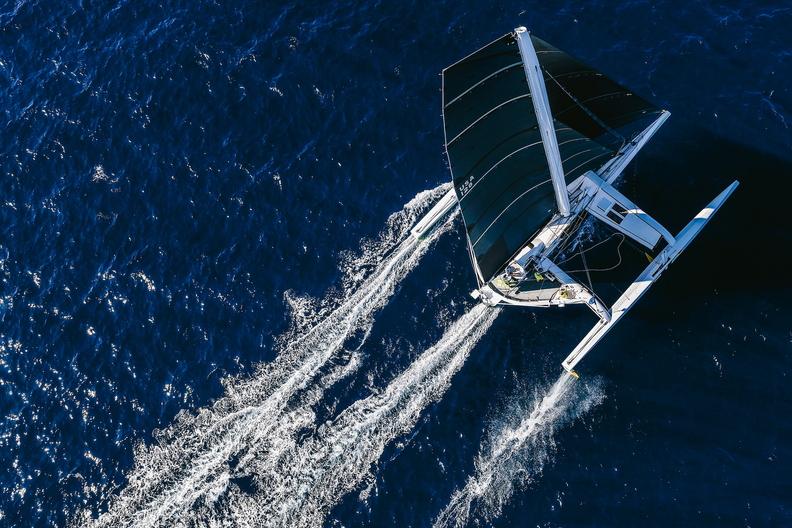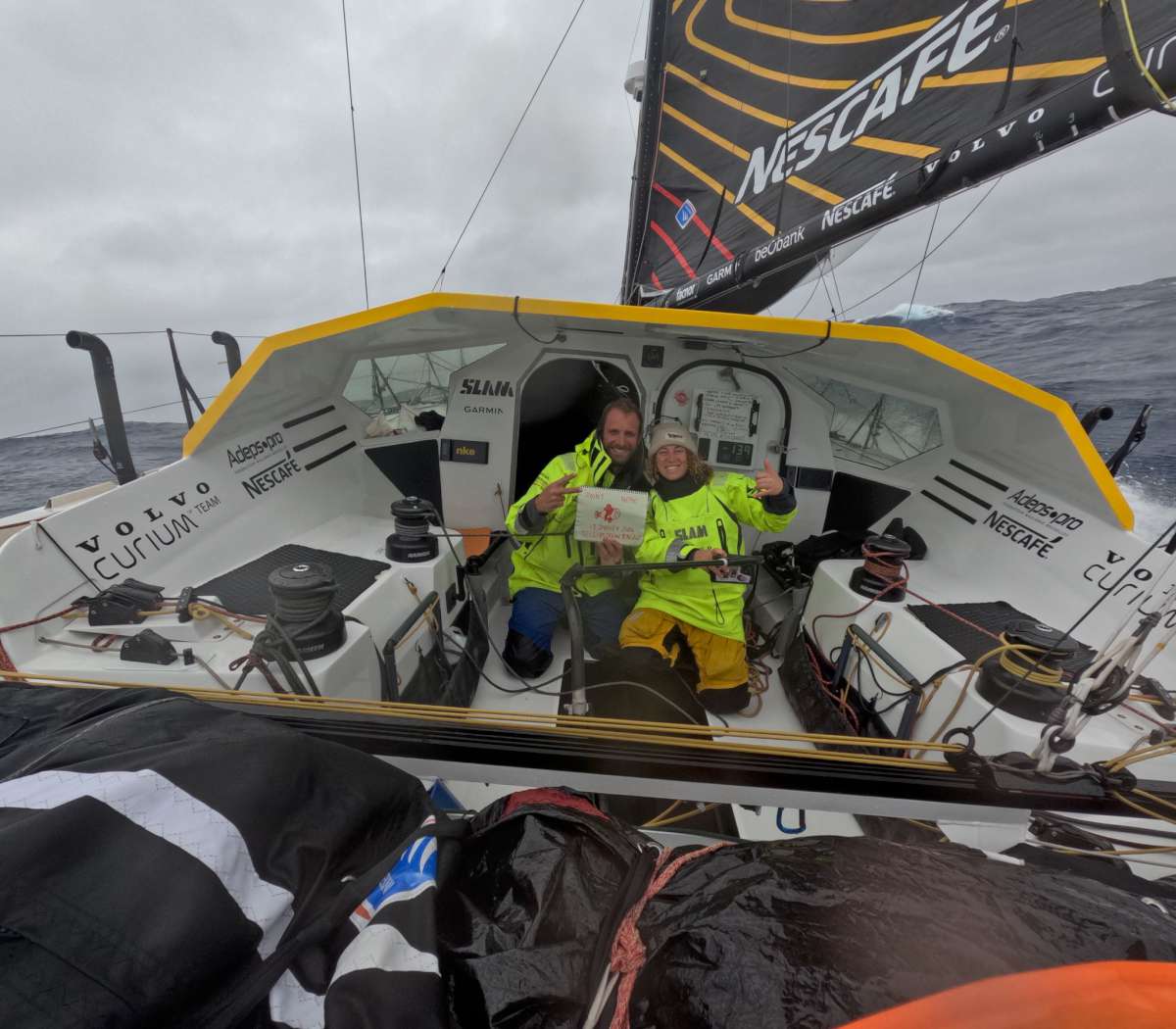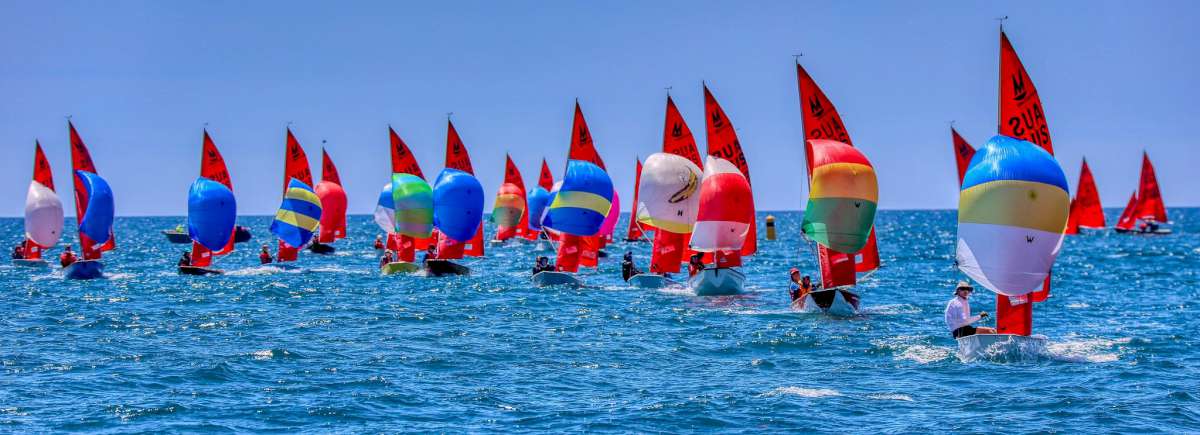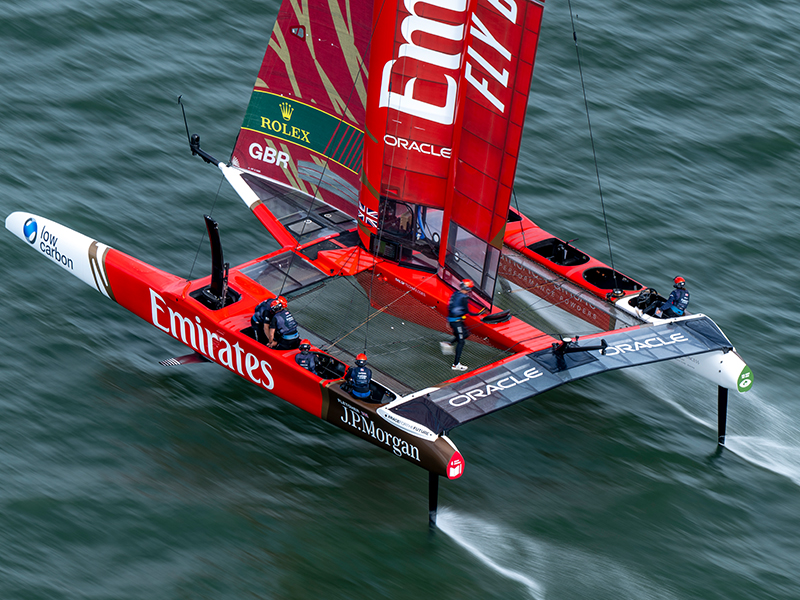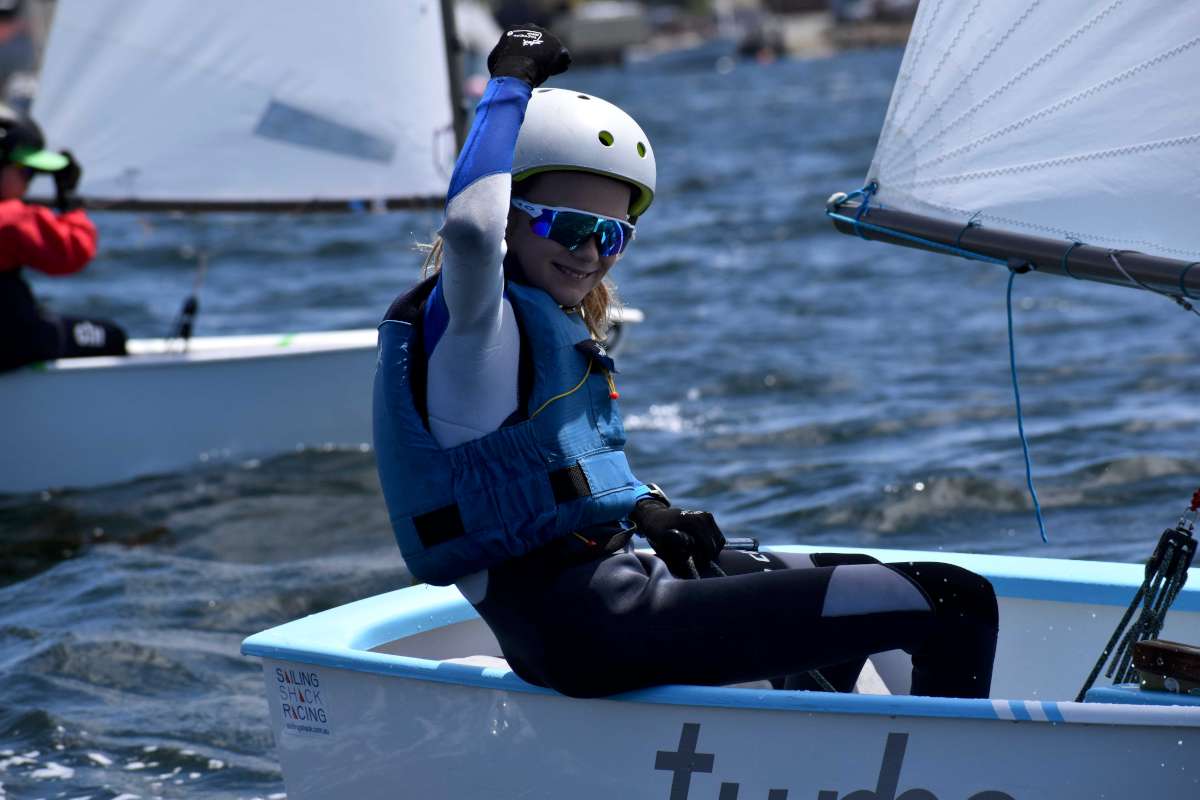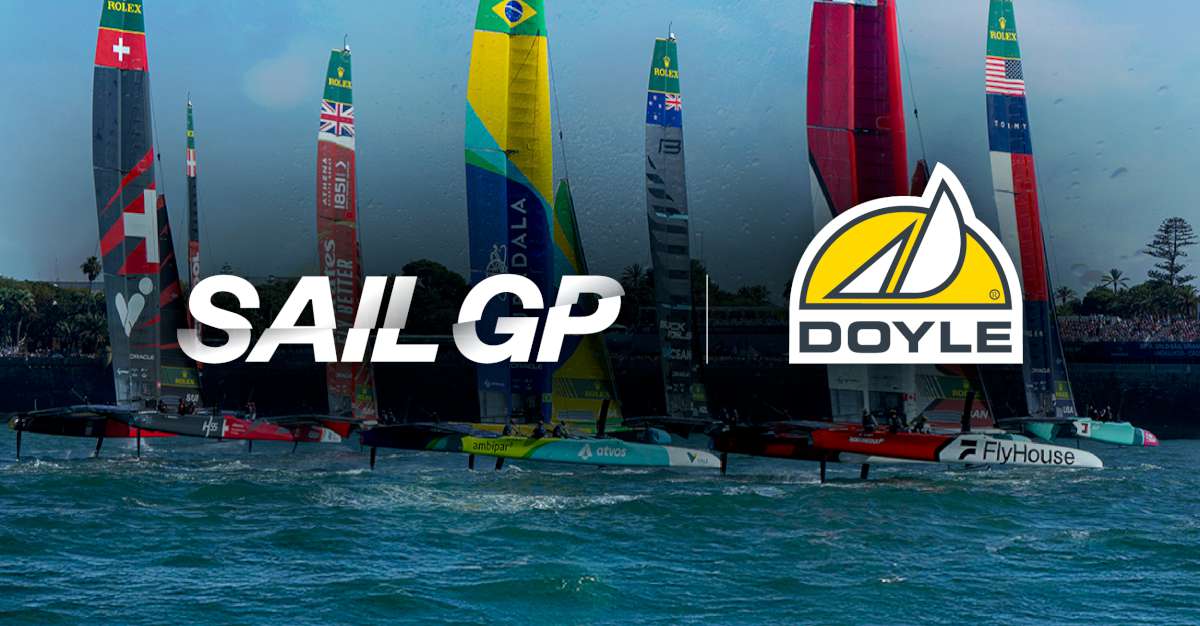In the 1980s every major tourist beach in the world had a cat hire operation. For many people, a Club Med or a Gold Coast holiday included hours spent broad reaching along the shoreline or trying to right the beast after sheeting the main a bit tight.
In Australia around 40 companies manufactured or imported various brands of beach cats to keep pace with the demand. But according to Australian Nacra agent Ross Guinea of the Brisbane Catamaran Centre, 1985 was the end of the boom years.
“We’re the last Mohican,” he says. “The pie has got a lot smaller, but we’re not giving up. It’s up to us to provide a product that appeals to the modern person.”
Fortunately for Ross and for the thousands of cat enthusiasts left over from that era, the beach cat is on the way back. It’s making its return on the back of a brand that offers a solid pathway from beginner to Olympic champion.
NACRA is an acronym for North American Catamaran Racing Association and its long involvement with Ross Guinea and his Australian manufacturing operation has placed its now Dutch owners in a strong position as the new and improved World Sailing (formerly ISAF) finally understands that the racing catamaran is here to stay.
HEAD IN THE SAND
The disastrous decision to drop the popular and spectacular Tornado class after the Beijing Olympics in 2008 and replace it with Women’s Match Racing was a classic case of the world body being totally out-of-touch with the sport’s trends.
The introduction of stadium racing on Extreme 40s in 2007 had shown how exciting cat racing can be. The 33rd America’s Cup Match in Valencia, between a giant catamaran and an even bigger trimaran, was not much of a spectacle but when the one-design AC72 cats zipped around San Francisco Bay in 2013 at speeds in excess of 50 knots, most of the world was captivated.
Meanwhile, crazy French sailors had been racing around the globe in massive trimarans for twenty years or more and in 2012 Loick Peyron and his crew in Banque Populaire V reduced the Jules Verne record to
45 days 13 hours 42 minutes 53 seconds.
Even on the cruising scene, despite the shortage of wide marina berths, catamaran imports have been growing exponentially for more than 10 years.
Finally, ISAF saw the light and reversed its “no cats” policy. The Nacra 17 will debut at the Rio 2016 Olympics with a mixed crew. Australia is a strong chance of a medal and it could even be a gold one around the necks of young Sydney cousins Jason Waterhouse and Lisa Darmanin who won the Rio test event in 2015.
But even more exciting than seeing cats back at the Olympics is another announcement showing that World Sailing is finally back in touch with its base – the Nacra 17 will be on foils by Tokyo 2020 and the Nacra 15, chosen as the Youth Worlds multihull from 2016, is expected to be foiling by 2017.
NACRA-LED REVIVAL
Australia has a very strong record in multihull racing. In the nine Olympics since Montreal 1976, the country has won three silver and two bronze medals. Glenn Ashby has won 16 multihull World titles and his Olympic partner in 2008, Darren Bundock has won 14. Both are likely to add more. Perhaps only the French can claim to be better on two hulls than we Aussies.
However, as with all trends, the rest of the world is aware of the growth in multihulls and nations such as Great Britain and the Netherlands are actively exploring ways to produce great multihull sailors.
Fortunately for Australia, we have the tools already to ensure a pathway from beginner to Olympic champion, with boats that also suit masters sailors, the growing number of women in our sport, and those who simply want to have fun on the water or do some weekend regattas.
INTRODUCTION TO CATS
I’m not sure whether Ross Guinea never gave up on the beach cat dream or if he was a visionary who saw the revival coming. But either way, his decisions to design and build the Nacra 430 in 2010 and follow it with the Nacra 350 in 2012 were inspired ones.
The Nacra 350 is the boat that sailing clubs should be buying if they want to add a multihull dimension to their offering, and therefore attract a much larger number of children, and their parents, into the sport.
Able to be sailed solo or two-up, the 11ft (3.5m) cat comes in two versions. The Clubman has a mainsail only and shallow draft rudders, which makes it ideal for sailing schools. The Sports model adds a jib and deep rudders. Both have a self-retracting line on a shock chord and one on the trampoline, making righting the boat after a capsize a breeze, even for
a lightweight child.
The 350 is a very modern-looking boat with wave-piercing bows (just like those AC72s), strong mono-film sails with yellow edges (just like the 49ers), a boomless square-topped main, carbon fibre kick-up rudders and a single trapeze to let the solo sailor or one of the crew enjoy the thrill of being suspended above the water at speed.
Ross Guinea says the key to a good club multihull program is to have a plan for expansion. “If the club buys, say, three boats they will soon have the local kids down at the beach wanting to sail. When one of the kids wants his own boat, sell him one of the club ones and buy a new one. Now you have four. In no time, the fleet will grow and you’ll have good racing and a long line of kids wanting to be involved.”
However, the beauty of the 350 is that it is not just for kids. It’s an ideal boat for the increasing number of women coming into the sport and can also be a family boat to be taken on holiday. At around $9000, it’s competitively priced and probably unsurpassed for “excitement per dollar”.
At just 2.1m in width, the 350 fits a standard box trailer or camper trailer and the quick-release rudder, captive mast step system and simple rigging mean the boat can be assembled and dis-assembled very quickly.
ADD SPINNAKER
The Nacra 430 was first produced in 2010. This was the stepping stone to the F18 level but now is the ideal intermediate boat before the international 15s and 17s.
Aimed at the teenage market but equally appealing to adults wanting a fun cat or some weekend racing, it too can be sailed solo or two-handed and comes in three versions.
The Clubman is, as its name suggests, a great club boat with a long-lasting Dacron sail, mainsail only and shallow draft rudders. The next step is the Sports version which is designed for racing, with Mylar mainsail and jib and deep rudders for better control. Finally, the Rocket version features a mid-pole snuffer spinnaker, as in an F18.
The 430 starts at around $13,900.
There are many other versions of the Nacra, including boats designed for resorts (yes, the come-back will happen there too) and the world championship winner at F18 level, the Nacra Infusion. They even have big boats suitable for regatta weeks, such as the Nacra 36 Malice that dominated the Clipper Cup in Port Douglas last year.
However, world attention right now is focussing on the Nacra 15 and Nacra 17, which have been chosen for the elite level of our sport.
YOUTH WORLDS
Last year, ISAF (as it still was) announced that they had chosen the Dutch-designed Nacra 15 as the multihull for the Youth Worlds. This is obviously a stepping-stone to Olympic sailing and some of our best Olympians, including Jason Waterhouse and Lisa Darmanin, first made their mark at this level.
The Nacra 15 was specifically designed to fulfil ISAF’s criteria and it is an ultra-modern design with two curved dagger boards to provide lift, making it semi-foiling. Stabilisers on the rudders control pitch, allowing forward momentum to be expressed as speed across the water, rather than into it.
Although it had not been officially announced when I researched this article, I heard very strong rumours that the Nacra 15 is to be on foils for the 2017 Youth Worlds.
The first of the new Nacra 15s are now available in Australia and at time of going to print the price was expected to be $25,000. Manufactured in Asia for the Dutch owners of Nacra, the price is dependent on currency fluctuation.
OLYMPIC CLASS
When the Nacra 17 was announced as the new Olympic multihull, many of us shook our heads and wondered why ISAF would commission yet another new design when there were perfectly good F18s and other designs already in existence. However, we have had to eat our words.
The 17 was designed specifically to be sailed by a mixed crew, in keeping with the IOC directive to have equal numbers of men and women competing in each sport. As ISAF was dropping the three-person women’s match racing boat to accommodate the return of a multihull, going back to a two-man craft was not politically feasible.
Initially we all thought that the design would suit a woman helm and a big, tall, strong male – the size equation that works for the 470, where helms tend to be small and crews tall. But because the Nacra 17 was purpose-built for a mixed crew, that has not been the case.
“As a female crew I was told at the beginning that I would not be competitive against the male crews,” says Lisa Darmanin. “But I’ve proven that it is possible.
“I think the mixed gender class is unreal and its great to have girls and guys helming and crewing against each other on one race track.”
Most of the top crews, such as the dominant French pairing of Billy Besson and Marie Riou, have the male on the helm. The most notable exception is the Kiwi pairing of Gemma Jones and Jason Saunders. The diminutive Jones, daughter of Olympian and America’s Cup legend Murray Jones, has the tiller while the tall and broad-shouldered Saunders uses his height to get a long way out on the trapeze. It is obvious that either gender combination works – which is what the designers were tasked with.
To get a new class accepted at the Olympics is a major undertaking, which is why the Star, 470 and Finn lasted so long. However, the “new” World Sailing found and acted upon a little-known clause in the rules to take the Nacra 17 to a full foiling class for Tokyo 2020.
ISAF Regulation 23.1.3(f): ISAF may at any time require evolution of selected Equipment and shall liaise with the Class organisation and manufacturers before so deciding. Any such evolution shall be decided no later than 31 December of the year five years before the Olympic Sailing Competition.
At this stage, no-one is sure how that will work out. With coaches and sailors concentrating on Rio 2016, any discussion on foils has been put on the back-burner. But there will be detailed presentations at the Nacra Worlds in February, where issues such as ride control and the balance between male and female crews will be discussed.
Australian Nacra coach and Olympic silver medallist Andrew Landenberger explained: “Right now teams are learning to foil for limited periods on a boat with very basic C boards and no rudder elevators. This is effectively like trying to fly a plane without a tail, so it is hard to imagine that full foiling design updates would make the boat harder to sail. This is of course still unknown until we see the final design on the water.
“There can be quite a trade off between potential speed and design stability so it will really depend on which way Nacra decide to go. What is clear is that teams are all trying to win a gold medal so they will always push the limits of any design, trying to get the edge.
“There is no doubt that the age factor is a major part already in the class. The current boat is already physically demanding and this move towards full foiling will play
to the advantage of the young and fearless.”
PATHWAYS AND FUN DAYS
Looking at the Nacra stable of boats, it’s obvious that the beach cat is back. I have watched the world’s best off-the-beach multihull sailors competing in the Olympic class Nacra 17 and it is exciting. With better television production and high interest in sailing among Olympic viewers after the four medal haul in 2012, I’m picking that the multihull class will be among the favourites in August. Especially if Jason and Lisa maintain their winning form.
As always when an exciting sport is shown on TV, with Australians doing well, there will be thousands of Aussie kids saying to their parents, “I want to do that!”
Because Ross Guinea refused to give up on the dream, we have a pathway already to go. Clubs can buy a small fleet of Nacra 350s or 450s and revitalise their junior programs.
But these boats are also great for just having fun, so mums and dads can get on to one and teach the kids to sail. Or buy them an ice cream instead and go out for a blast on the trapeze themselves.
I don’t know that we’ll ever see the same number of beach cat hire shacks that we did in the 1980s. But get ready for the second coming – this is a part of our sport that is on the move.
– Roger McMillan
For more stories like this subscribe to Australian Sailing with Great Magazines or get a digital copy at iTunes.

